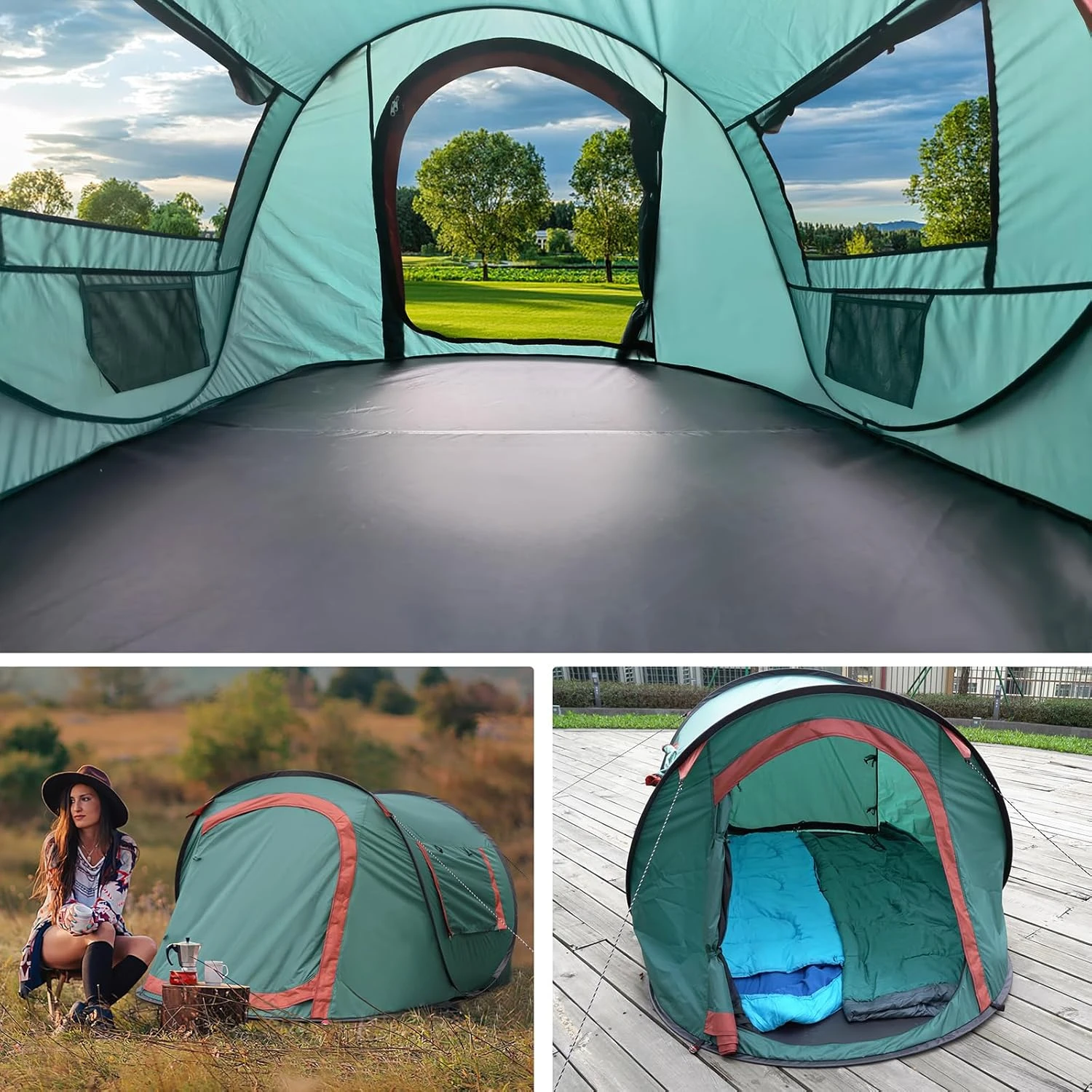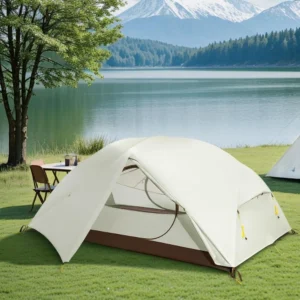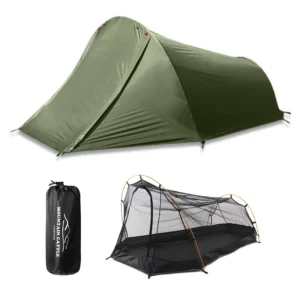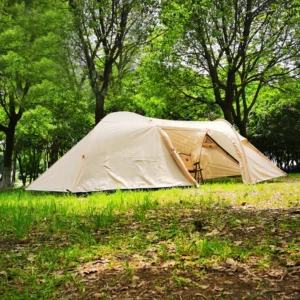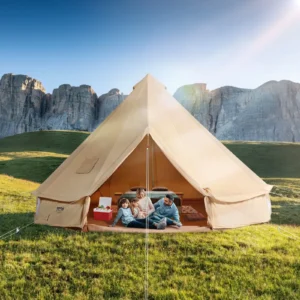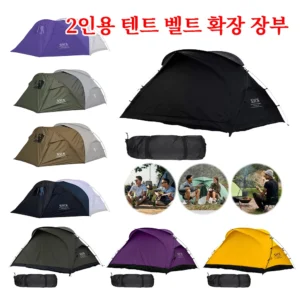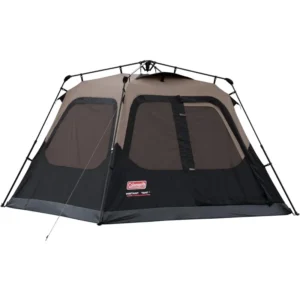The Evolution and Appeal of Waterproof Pop-Up Tents
Camping has transformed dramatically in recent decades, with one of the most revolutionary innovations being the introduction of pop-up tents. These ingenious shelters have redefined how we approach outdoor experiences, eliminating the frustration of complicated pole assemblies and time-consuming setups that once characterized camping preparations.
The popularity of waterproof pop-up tent designs has surged tremendously across diverse user groups, from festival-goers to family campers and outdoor enthusiasts seeking quick shelter solutions. This growth stems from our collective desire for simplicity without sacrificing protection from the elements. As outdoor recreation continues to attract newcomers, the appeal of tents that deploy in seconds rather than minutes has become undeniable.
Modern waterproof pop-up tents represent an impressive balance between convenience and performance. What began as simple, often flimsy instant shelters has evolved into sophisticated weather-resistant systems that can withstand significant rainfall while maintaining their quick-deployment benefits. This evolution reflects manufacturers’ understanding that users want both ease and reliability.
The waterproofing technology specifically developed for pop-up structures has advanced considerably, addressing unique challenges presented by their specialized frames and fabric tension systems. Engineers have created innovative solutions for vulnerable points like seams and entrances while maintaining the core benefit of instant setup.
Pop-up tents emerged as an alternative to traditional camping shelters around the early 2000s, initially gaining popularity for activities where setup speed was prioritized over weatherproofing. As technology improved, their applications expanded dramatically. Today’s market offerings serve diverse scenarios including:
- Weekend warrior camping trips
- Music festivals and outdoor events
- Beach day protection
- Backyard activities
- Emergency preparedness
- Impromptu outdoor gatherings
Understanding different shelter options for two campers helps put pop-up tents in context among the broader range of outdoor accommodation choices. While traditional tents may offer greater stability in extreme conditions, modern pop-up designs have narrowed this performance gap considerably while maintaining their signature convenience.
Structural Diversity: Key Pop-Up Tent Design Categories
The world of waterproof pop-up tents encompasses several distinct structural designs, each offering unique benefits for different camping scenarios. Understanding these structural variations helps in selecting the right tent for specific conditions and preferences.
Dome-Style Pop-Ups
Dome-style pop-up tent designs represent the most common and versatile structure in the market. These tents feature a hemispherical shape created by crossing flexible poles that form the framework.
Pros:
– Excellent rain runoff due to rounded top
– Good wind resistance from aerodynamic shape
– Balanced interior space with decent headroom
– Relatively lightweight for their size
Cons:
– Less vertical wall space than cabin designs
– Typically lower interior height at edges
– Limited floor space efficiency compared to other designs
Cabin-Style Pop-Ups
These designs prioritize interior living space with more vertical walls that maximize usable area inside the tent.
Pros:
– Superior headroom throughout most of the tent
– More efficient floor space utilization
– Better for standing and moving around
– Often include room dividers for privacy
Cons:
– Less efficient in shedding heavy rain
– Poorer wind performance due to flat surfaces
– Generally heavier than comparable dome designs
– More complex waterproofing requirements at corners
Hexagonal/Multi-Sided Designs
These distinctive structures offer a compromise between dome and cabin styles with unique stability characteristics.
Pros:
– Enhanced stability through multiple tension points
– Efficient use of materials for strength
– Distinctive appearance
– Good rain shedding capabilities
Cons:
– Often more complex to fold back into carrying position
– Can have awkward interior spaces
– May require more careful staking and guying
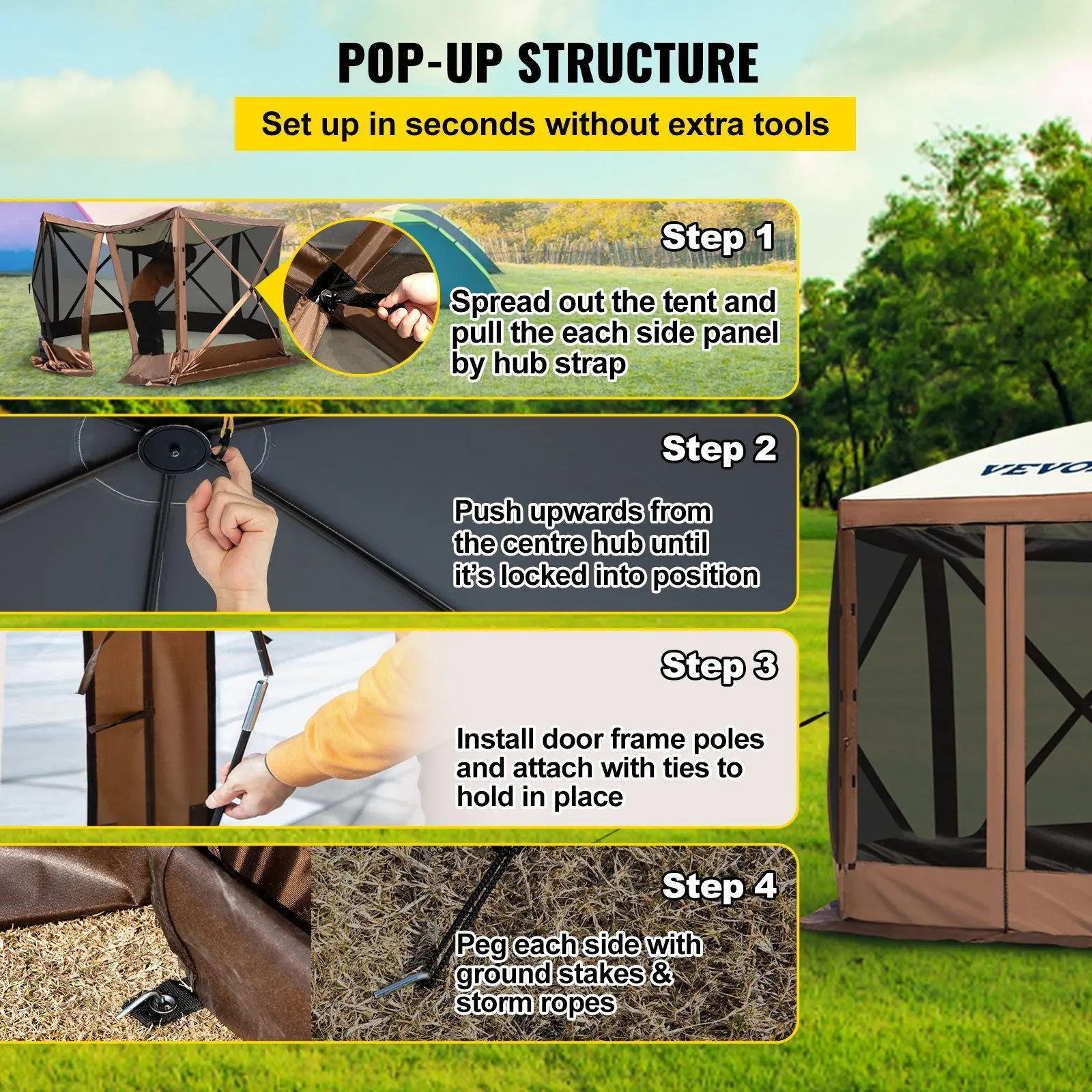
Tunnel-Style Quick-Pitch Tents
While not always true “pop-ups,” tunnel designs feature quick-pitch systems that achieve similar convenience while offering elongated living spaces.
Pros:
– Maximum usable interior space
– Clear separation between sleeping and living areas
– Good headroom along central line
– Excellent for longer stays
Cons:
– Requires proper orientation to wind direction
– Needs more secure anchoring
– Often heavier than other designs
– More susceptible to pooling water in heavy rain
Understanding what size tent is good for 2 people becomes particularly important when evaluating these different structural designs, as interior space configuration varies significantly between styles.
Setup Mechanisms: The Technology Behind “Pop-Up”
The defining feature of pop-up tents is their rapid deployment capability, but not all “pop-up” mechanisms work the same way. These technical differences significantly impact both durability and waterproofing performance.
True Spring-Loaded Pop-Up Systems
Authentic pop-up tents employ compressed spring-steel frames that automatically expand when released from their carrying position. These pre-assembled structures require no additional assembly—simply remove restraints and the tent springs into shape within seconds.
The technology behind these systems involves flexible fiberglass or steel coils that store potential energy when folded. This energy instantly converts to an expanded structure when released. While extremely convenient, this design creates several waterproofing challenges, particularly at connection points where fabric meets the flexible frame.
Hub-Based Quick-Pitch Systems
Many instant camping tent designs use centralized hub systems rather than true spring mechanisms. These utilize pre-attached poles that extend from a central connector, creating the tent structure in one coordinated movement.
Hub systems typically offer superior stability and better waterproofing potential since the frame components can be more substantially engineered. The trade-off comes in slightly longer setup times (usually 1-2 minutes versus seconds) and more complex folding procedures.
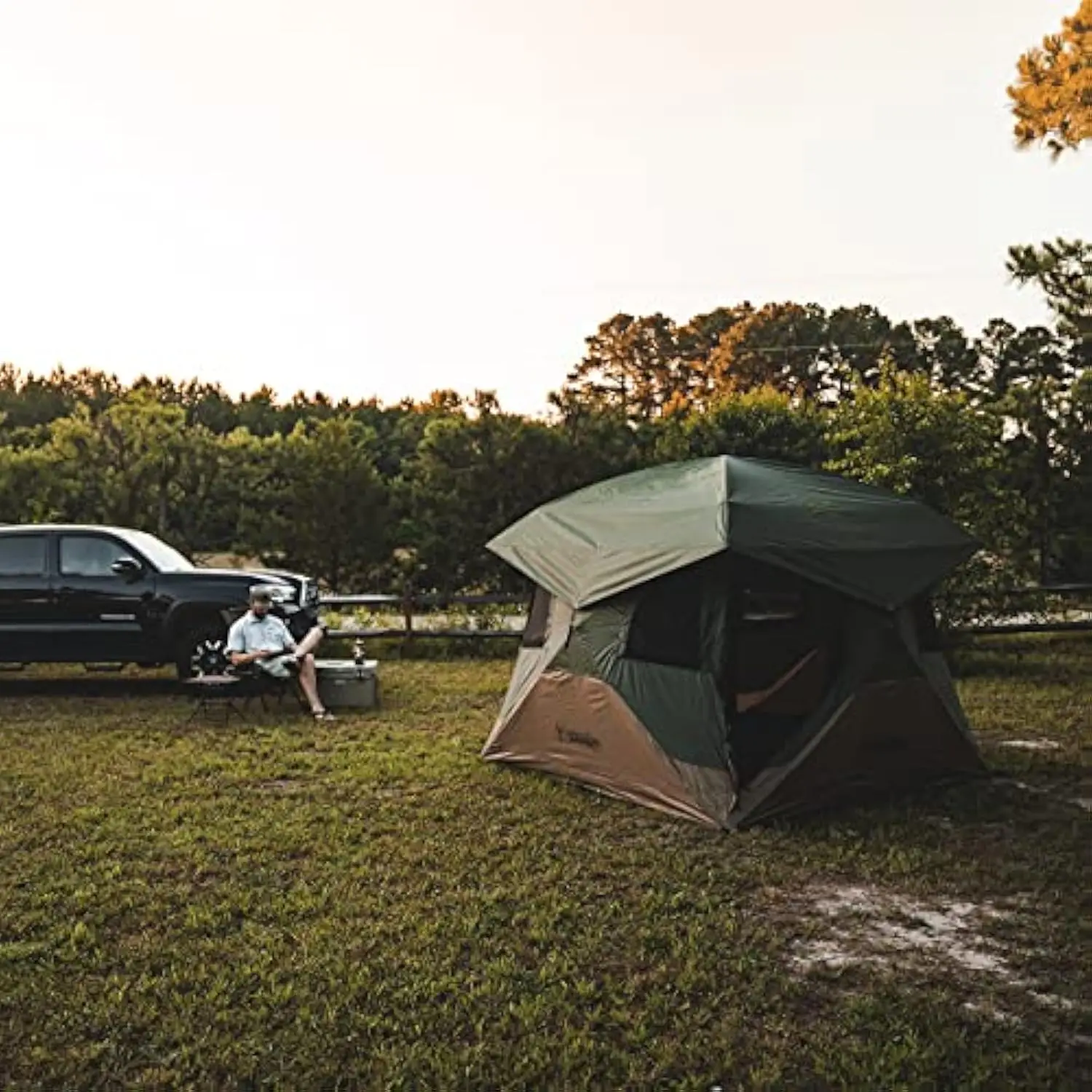
Folding Challenges and Considerations
The convenience of instant setup often comes with the counterbalance of more challenging pack-down procedures. Spring-loaded designs particularly require specific folding techniques that can be frustrating for newcomers. This learning curve represents an important consideration when selecting a waterproof pop-up tent.
Understanding your perfect quick-setup tent options involves recognizing these mechanical differences and their implications for both convenience and weather protection.
Capacity Configurations: From Solo to Family Size
Waterproof pop-up tent designs vary dramatically based on intended capacity, with each size category presenting unique waterproofing challenges and solutions.
Solo and 2-Person Designs
Compact pop-up tents prioritize minimal weight and maximum portability. Their waterproofing approach typically focuses on:
- Simplified single-entrance design to minimize seams
- Lower profile to reduce wind exposure
- Streamlined rainfly coverage
- Minimal interior volume requiring ventilation
Many campers wonder is a 2-person tent actually big enough, and the answer depends largely on your comfort expectations and gear storage needs. In pop-up designs, interior space tends to be somewhat less optimized than in traditional tents of similar capacity ratings.
2-person pop-up tents typically offer just enough space for two sleeping pads with minimal additional room, though some models incorporate small vestibules for gear storage.
Family-Size Multi-Room Configurations
Larger capacity pop-up tents (4+ person) often incorporate room dividers, multiple entrances, and specialized waterproofing features:
- Rain gutters to channel water away from doorways
- Reinforced seams at connection points between rooms
- Multiple ventilation points to manage increased interior moisture
- Extended rainfly coverage over entrance areas
These designs face the additional challenge of maintaining waterproof integrity across a larger surface area while remaining manageable for setup and transportation.
Waterproofing Technologies in Pop-Up Tent Design
Understanding waterproofing technology is essential for evaluating pop-up tent performance in wet conditions. Several key metrics and technologies determine how effectively a tent will protect you from rain.
Hydrostatic Head Ratings Explained
The primary measurement of fabric waterproofing is hydrostatic head (HH), expressed in millimeters. This rating indicates how much water pressure a fabric can withstand before leakage occurs:
- 1000-1500mm: Resistant to light rain showers
- 2000-3000mm: Suitable for moderate rainfall
- 3000-5000mm: Performs in heavy, sustained precipitation
- 5000mm+: Withstands extreme weather conditions
For context, a fabric rated at 3000mm can withstand a column of water 3 meters tall pressing against it before leaking. For most recreational camping in varied weather, waterproof camping tent designs with at least 2000-3000mm ratings provide adequate protection.
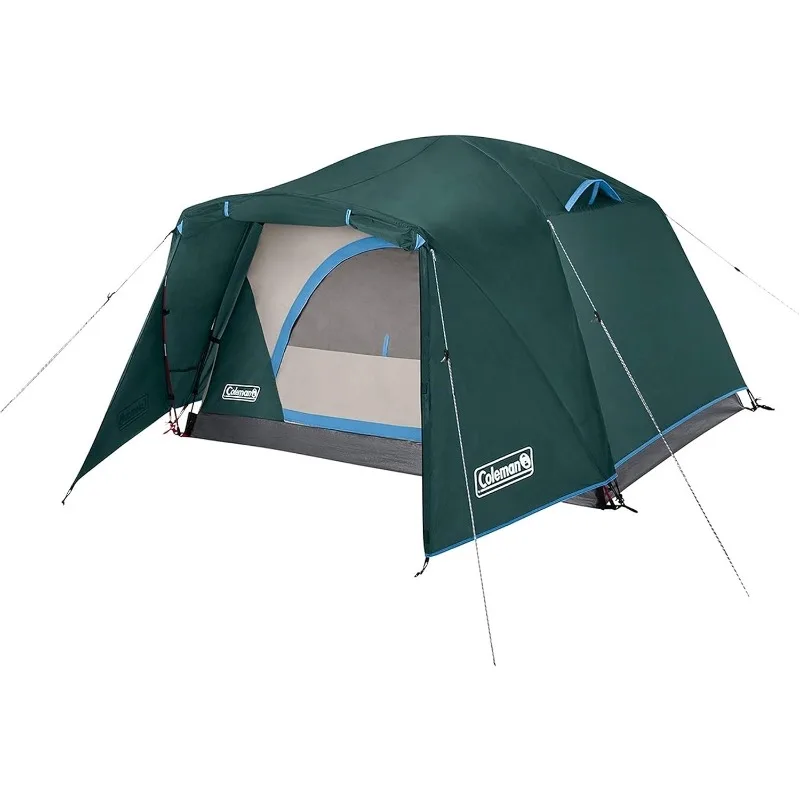
Coating Technologies and Their Effectiveness
Different waterproof coatings offer varying levels of performance and durability:
Polyurethane (PU) Coating:
– Most common and affordable option
– Applied to tent fabric’s interior side
– Effective initially but may degrade with repeated use
– Typically provides 1500-3000mm HH ratings
Silicone Coating:
– Premium waterproofing solution
– Can be applied to both sides of fabric (silnylon)
– Superior longevity and flexibility
– Maintains waterproofing through many uses
– Often provides 3000-5000mm+ HH ratings
Durable Water Repellent (DWR) Finishes:
These surface treatments cause water to bead up and roll off before reaching the main waterproof barrier. They serve as the first line of defense by preventing the outer fabric from becoming saturated, which helps maintain breathability while enhancing overall waterproofing effectiveness.
Understanding waterproof gear for backpackers provides additional context for evaluating these technologies within the broader outdoor equipment category.
Rainfly Architecture: Coverage and Integration
The rainfly design significantly impacts a tent’s weather protection capabilities. In pop-up tents, manufacturers take different approaches to rainfly integration that affect both waterproofing and usability.
Full Coverage vs. Partial Rainfly Designs
Full Coverage Rainflies:
– Extend to or near ground level on all sides
– Provide maximum weather protection
– Create air gap between fly and inner tent for condensation management
– Offer additional UV protection for inner tent materials
– Common in premium waterproof pop-up designs
Partial Rainflies:
– Cover only the top and perhaps upper walls of the tent
– Lighter weight and more compact when packed
– Allow better views and airflow in good weather
– Less effective in wind-driven rain
– More common in budget and fair-weather designs
Integrated vs. Separate Rainfly Systems
Waterproof backpacking tent designs have influenced pop-up tent development, particularly regarding rainfly architecture:
Integrated Rainfly Systems:
– Built into the main tent structure
– Deploy automatically with the tent
– Cannot be removed in good weather
– Simplify setup but may reduce ventilation options
– Common in true spring-loaded pop-ups
Separate Rainfly Systems:
– Attach after the main tent body is erected
– Can be removed in dry, clear conditions
– Provide more versatility for different weather conditions
– Add a step to the setup process
– More common in hub-based quick-pitch designs
The effectiveness of different rainfly designs varies significantly by environment. Understanding the right compact shelter for two people requires considering typical weather conditions in your camping locations.
Critical Waterproofing Details: Seams and Floors
The most vulnerable points in any tent’s waterproofing system are the seams and floor edges—places where water can find entry paths through stitching holes or material joins.
Seam Sealing Technologies
Factory Tape-Sealed Seams:
– Waterproof tape applied to seam interiors during manufacturing
– Creates consistent protection without user intervention
– Quality varies significantly between manufacturers
– May deteriorate over time and require reapplication
Welded Seams:
– Uses heat/ultrasonic bonding instead of stitching
– Eliminates needle holes entirely
– Superior waterproofing performance
– Typically found in premium tent models
– Increasingly common in high-end pop-up designs
Critical Seam Locations:
– Rainfly roof peak
– Door and window perimeters
– Floor perimeter and groundsheet connections
– Pole attachment points
Bathtub Floor Construction
The most effective waterproof pop-up tents feature “bathtub” floors where the floor material extends several inches up the sidewalls before connecting to the main tent body. This design prevents splashing and ground-level water from entering the tent.
Key aspects of effective floor waterproofing include:
- Higher denier (thicker) material for floors than walls
- Wrapped and sealed corners
- Reinforced stake points
- Adequate elevation from ground contact points
Proper tent care and packing is essential for maintaining these waterproofing features over time, particularly keeping the tent clean and properly dried before storage.
Ventilation Engineering: Balancing Airflow and Waterproofing
Perhaps the greatest challenge in waterproof tent design is balancing water protection with adequate ventilation. Without proper airflow, even the most waterproof tent will develop significant internal condensation that can make occupants just as wet as a leaking tent would.
The Condensation Challenge
Condensation forms when warm, moisture-laden air (from breathing, body heat, wet gear) contacts the cooler tent surfaces. In pop-up tents, this challenge is amplified by:
- Smaller interior volumes
- Often lower ceiling heights
- Limited options for adjustable ventilation
- Simplified construction methods
The challenge is particularly relevant when camping in forest hiking environments where ambient humidity is often higher and air circulation can be limited by surrounding vegetation.
Integrated Ventilation Solutions
Quality waterproof pop-up tents incorporate several ventilation features designed to work even during rainfall:
Protected Overhead Vents:
– Positioned at tent peaks
– Covered by rainfly extensions or hoods
– Allow hot air and moisture to escape through natural convection
– Often adjustable from inside the tent
Mesh Panels with Waterproof Covers:
– Strategically placed in upper walls or doors
– Feature zippered covers for weather adjustment
– Balance airflow with rain protection
Ground-Level Vents:
– Create low-entry points for fresh air
– Establish convection flow from bottom to top
– Often protected by small awnings or baffles
– Help reduce floor-level condensation
Single-Wall vs. Double-Wall Design Impact
Double-Wall Construction:
– Separate inner tent (breathable) and rainfly (waterproof)
– Creates insulating air gap that reduces condensation
– Allows moisture to escape through inner tent before reaching fly
– More effective ventilation but slightly more complex
Single-Wall Construction:
– Combines waterproof and structural elements in one layer
– Common in ultralight and some pop-up designs
– More prone to condensation issues
– Requires more strategic vent placement
The most effective pop-up tent designs incorporate elements of both approaches, with waterproof-breathable panels in strategic locations while maintaining full weather protection.
Material Science: Fabric and Framework Choices
The materials used in waterproof pop-up tent construction directly impact performance, durability, and portability. Understanding these materials helps evaluate quality beyond marketing claims.
Tent Fabric Considerations
Polyester:
– Most common in pop-up tents
– Maintains tension when wet (minimal stretching)
– Typically less expensive than nylon
– Better UV resistance
– Commonly used in entry and mid-level waterproof pop-ups
Nylon:
– Stronger and more tear-resistant at equivalent weights
– Tends to stretch when wet (requires re-tensioning)
– Quicker drying
– Often found in higher-end models
– More susceptible to UV degradation over time
Canvas/Polycotton Blends:
– Used in premium canvas camping tent designs
– Naturally water-resistant when properly weathered
– Excellent breathability and condensation management
– Significantly heavier than synthetic options
– Superior durability and longevity
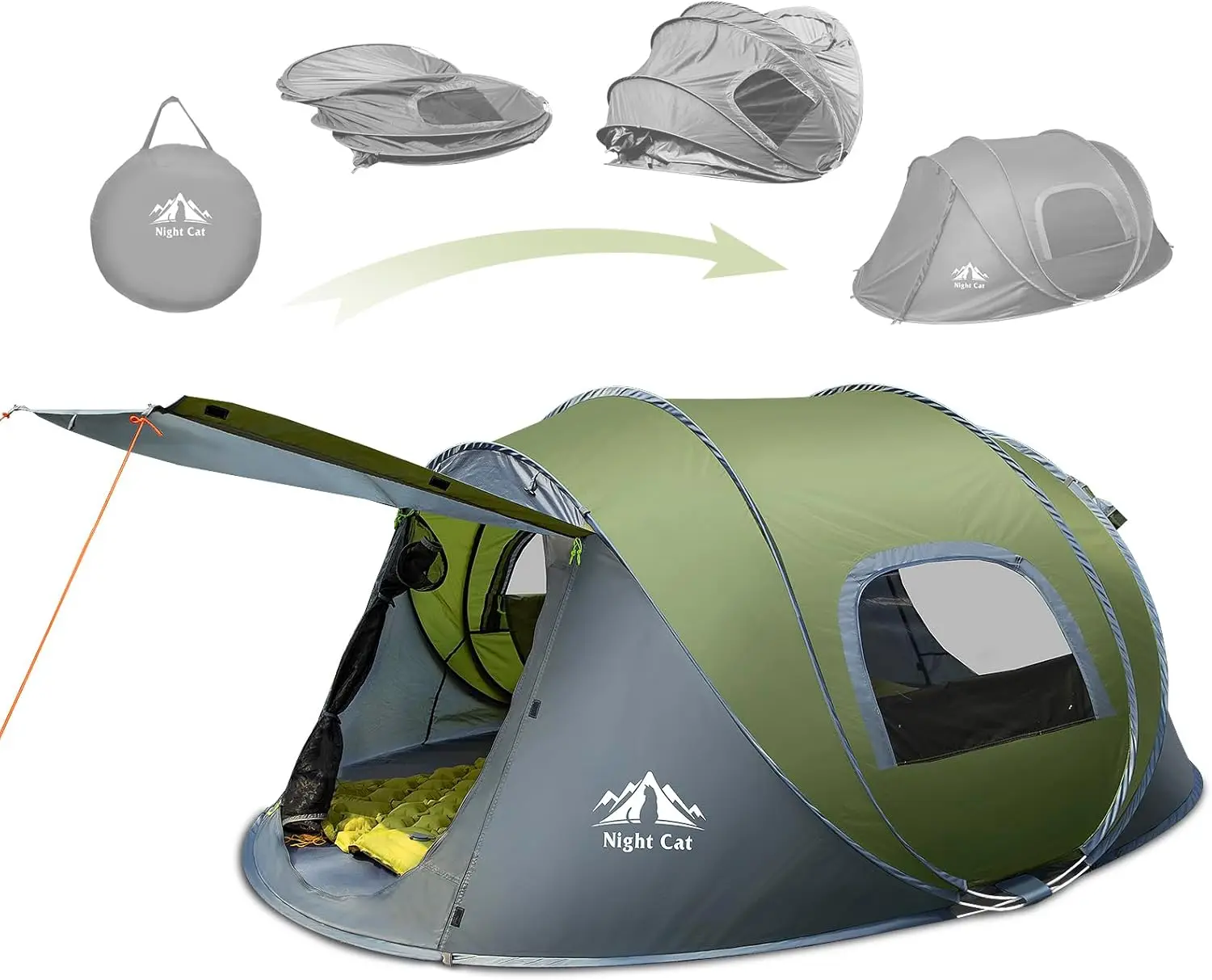
Understanding Denier Ratings
Fabric thickness is measured in denier (D), with higher numbers indicating stronger, heavier materials:
- 15-30D: Ultralight fabrics (rarely used in pop-ups due to durability concerns)
- 40-70D: Common for tent walls and rainflies
- 70-150D: Standard for tent floors
- 150D+: Heavy-duty floor materials for enhanced puncture resistance
Higher denier fabrics generally provide better waterproofing durability as they resist wear and punctures that could compromise water resistance.
Structural Framework Materials
The poles and structural elements of pop-up tents significantly impact weather performance:
Fiberglass:
– Common in budget and mid-range options
– Adequate for moderate conditions
– Heavier than aluminum
– Less durable with repeated flexing
– More prone to breakage in high winds
Aluminum:
– Lighter weight with superior strength
– Better performance in adverse conditions
– More durable over time
– Found in premium pop-up models
– Maintains integrity better in high winds
Spring Steel:
– Used in true instant pop-up designs
– Excellent memory for repeated setups
– Heavier than aluminum options
– Extremely durable when properly manufactured
Usability Factors in Waterproof Pop-Up Designs
The practical aspects of using waterproof pop-up tents significantly impact overall satisfaction. Even the most weather-resistant design can disappoint if it proves difficult to use effectively.
Setup Speed and Learning Curve
While all pop-up tents deploy faster than traditional designs, significant variations exist:
- True spring-loaded designs: 1-5 seconds (literally “pop” open)
- Hub-based quick-pitch systems: 60-120 seconds
- Hybrid designs: 2-5 minutes
Most designs require a learning curve, particularly for the folding process. First-time users should practice at home before relying on a new pop-up tent in the field. Understanding efficient tent setup techniques can significantly improve the experience.
Packing Challenges and Solutions
Folding spring-loaded pop-up tents back into their carry cases often presents the greatest usability challenge. Common issues include:
- Counter-intuitive folding sequences
- Difficulty controlling the sprung frame during compression
- Fitting the folded tent into undersized carry bags
- Managing attached components like rainflies during folding
Quality designs address these challenges through:
– Color-coded folding indicators
– Slightly oversized carry bags
– Compression straps at strategic points
– Clear instruction graphics printed on storage bags
Portability Considerations
Waterproofing features often add weight and bulk to pop-up tents. When evaluating portability, consider:
- Packed dimensions (some designs fold flat while others form circular discs)
- Weight (typically 20-50% heavier than non-waterproof equivalents)
- Carrying case design (shoulder straps, handles, compression features)
The best designs balance weather protection with reasonable portability rather than compromising excessively on either factor.
All-Weather Performance: Design for the Elements
While waterproofing is the primary focus of this guide, comprehensive weather performance includes several interconnected design elements.
Rainfall Performance Characteristics
Different pop-up tent designs handle rainfall with varying effectiveness:
Dome Shapes:
– Natural water shedding from curved surfaces
– Minimal horizontal surfaces for water pooling
– Good performance in sustained rainfall
Cabin Styles:
– May collect water on flat roof sections
– Require proper tensioning to prevent pooling
– Often incorporate integrated drainage channels
Critical Rain Features:
– Extended door/window rain guards or “eyebrows”
– Angled zippers with protective flaps
– Adequate rainfly coverage at guy point attachments
– Door designs that don’t channel water inward when opened
Easy setup camping tent designs often incorporate weatherproofing features that function effectively with minimal user adjustment, important during rapid deployment in deteriorating conditions.
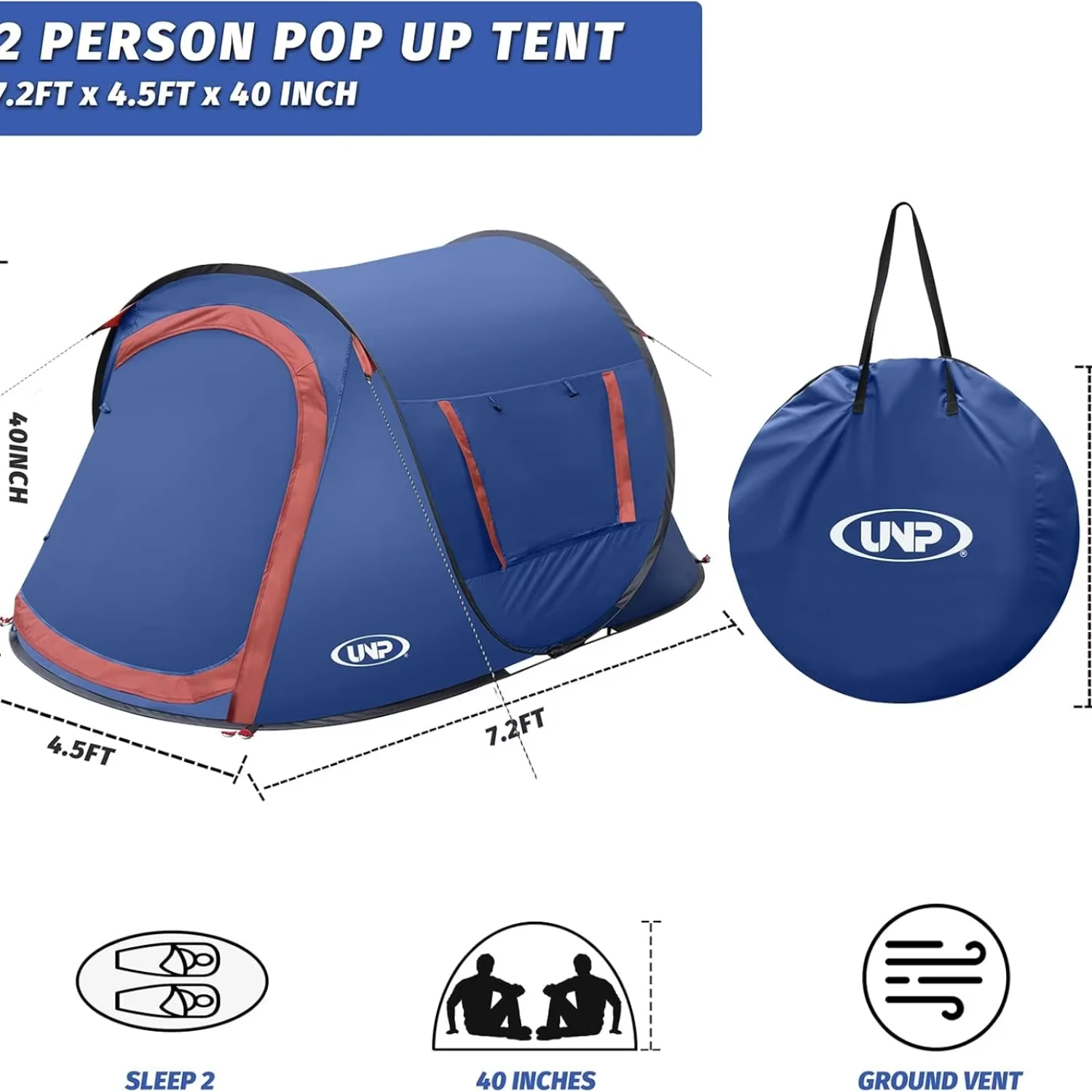
Wind Performance Evaluation
Wind resistance in pop-up tents comes from several design elements:
- Lower profiles create less wind resistance
- Dome shapes deflect wind more effectively than vertical walls
- Guy line attachment points distribute force across the structure
- Frame flexibility allows controlled movement without breakage
Most pop-up designs perform best when properly oriented with the smallest profile facing the prevailing wind direction.
UV Protection and Heat Management
Extended sun exposure presents challenges for waterproof tent materials:
- UV radiation degrades waterproof coatings over time
- Dark-colored rainflies absorb heat but typically last longer
- Light-colored flies reflect heat but may deteriorate faster
- Mesh panels become increasingly important for ventilation in hot weather
Some premium designs incorporate specific UV-resistant treatments or reflective coatings to address these challenges.
Interior Design: Livability Within Waterproof Constraints
The internal layout and features of waterproof pop-up tents significantly impact comfort, particularly during extended weather events when occupants spend more time inside.
Waterproofing Impact on Interior Space
Waterproofing requirements influence interior design in several ways:
- Additional layers reduce interior dimensions
- Ventilation needs dictate window and door placement
- Condensation management affects ceiling height requirements
- Bathtub floors reduce usable width at ground level
Managing Wet Gear and Dry Spaces
Camping tent vestibule features provide critical transitional spaces between wet exteriors and dry interiors. Effective designs include:
- Protected vestibule areas for gear storage
- Waterproof dividers between “wet” and “dry” zones
- Integrated gear lofts to elevate items from potentially damp floors
- Hanging points for wet clothing away from sleeping areas
Door and Window Designs for Weather Protection
Entry points represent vulnerability in waterproof designs. Quality tents address this through:
- Inward-opening doors that don’t catch rain
- Double-zipper designs that can be partially opened for ventilation
- Window covers that can be deployed without fully closing windows
- Angled doorways that naturally shed water away from openings
Space-saving tent designs for couples become particularly important when considering the reduced interior space that sometimes results from comprehensive waterproofing features.
Comparative Analysis: Evaluating Waterproof Pop-Up Designs
With numerous design approaches available, systematic evaluation helps identify the best waterproof pop-up tent for specific needs.
Evaluation Framework
When comparing waterproof pop-up designs, consider these key factors:
| Feature | Basic Designs | Mid-Range Options | Premium Models |
|---|---|---|---|
| Waterproof Rating | 1000-1500mm HH | 2000-3000mm HH | 3000mm+ HH |
| Setup Time | 2-60 seconds | 60-120 seconds | 30-90 seconds |
| Packed Weight | 2-4 lbs | 4-7 lbs | 5-9 lbs |
| Wind Stability | Low to Moderate | Moderate | Moderate to High |
| Ventilation | Limited | Good | Excellent |
| Interior Space | Minimal | Adequate | Generous |
| Durability | 1-2 seasons | 2-5 seasons | 5+ seasons |
Design Trade-offs
Every waterproof pop-up tent design represents a series of compromises:
- Increased waterproofing typically adds weight
- Faster setup often means more complex packing
- More durable materials generally increase cost and weight
- Better ventilation can introduce more potential leak points
When evaluating compact shelter options, prioritize features based on your typical camping conditions and personal preferences rather than seeking a single “perfect” design.
Lightweight Backpacking Tent, Ultralight Backpacking Tent, Waterproof Backpacking Tent
$391.05 Select options This product has multiple variants. The options may be chosen on the product pageCompact Backpacking Tent, Lightweight Backpacking Tent, Waterproof Camping Tent
$335.52 Select options This product has multiple variants. The options may be chosen on the product pageCamping Tent with Vestibule, Waterproof Camping Tent
Price range: $407.89 through $479.48 Select options This product has multiple variants. The options may be chosen on the product page- $1,221.93 Select options This product has multiple variants. The options may be chosen on the product page
Backpacking Tent with Vestibule, Trekking Pole Backpacking Tent, Waterproof Camping Tent
Price range: $271.99 through $519.52 Select options This product has multiple variants. The options may be chosen on the product pageEasy Setup Camping Tent, Instant Camping Tent
Instant Cabin Tent Double Layer Canvas 1-Minute Setup Spacious Family Camping Shelter with Air Vents$308.10 Select options This product has multiple variants. The options may be chosen on the product page
Scenario-Specific Recommendations
Different camping scenarios call for different design priorities:
Weekend Camping Trips:
– Moderate waterproofing (2000mm+)
– Emphasis on interior space and comfort
– Larger packed size acceptable
– Door/vestibule features important
Festival/Event Use:
– Quick setup paramount
– Moderate waterproofing sufficient
– Lower weight less critical
– Multiple doors valuable for access
Backpacking Adventures:
– Weight and packed size priority
– Higher waterproof ratings needed
– Minimal features acceptable
– Durability balanced with weight
Design Innovations: The Cutting Edge of Waterproof Pop-Ups
The waterproof pop-up tent category continues to evolve with exciting new technologies enhancing performance and convenience.
Advanced Materials and Construction
Recent innovations include:
- Multi-layer waterproof-breathable fabrics that reduce condensation
- Composite pole materials combining strength with reduced weight
- Welded construction techniques eliminating traditional vulnerability points
- Preformed pole structures that deploy with precise tensioning
Lightweight pop-up designs increasingly incorporate these advanced materials to overcome traditional compromises between weight and weather protection.
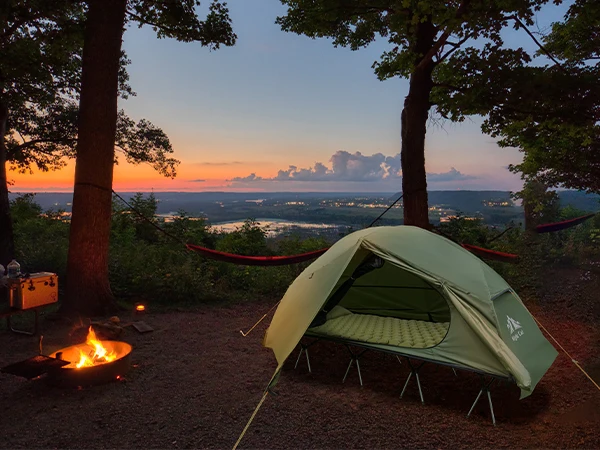
Emerging Features and Technologies
Forward-looking waterproof pop-up tents now incorporate:
- Quick-drain systems that channel water away from vulnerable areas
- Integrated ground anchoring for improved stability
- One-motion deployment with integrated rainfly
- Self-tensioning guy lines that maintain optimal pressure as fabric stretches
- Smart ventilation systems that respond to interior humidity levels
Sustainability Focus
Newer designs increasingly address environmental concerns through:
– Recycled fabric and pole materials
– PFC-free waterproof coatings
– Repairable components that extend product lifespans
– Reduced packaging waste
– Materials selected for recyclability
Selecting the Right Waterproof Pop-Up Design
With an understanding of design variations, making the right selection depends on aligning tent features with personal priorities and typical usage conditions.
Need Assessment Questions
Ask yourself these key questions when evaluating options:
- What is the worst weather I’m likely to encounter?
- How important is absolute minimum setup time?
- How frequently will I use the tent?
- Will I typically carry the tent long distances?
- How many people need comfortable accommodation?
- Do I need to stand up inside the tent?
- How important is ventilation in my typical camping climate?
Feature Priority Framework
Rather than seeking the “best” tent, identify your personal priority order for these features:
1. Weather protection level
2. Setup convenience
3. Interior space
4. Weight/packed size
5. Durability/longevity
6. Ventilation effectiveness
7. Price point
Decision Scenario Examples
Weekend Car Camping:
Prioritize interior space, setup convenience, and moderate waterproofing. Weight less important than comfort features.
Music Festival Attendance:
Focus on extremely fast setup, adequate waterproofing, and easy access. Consider visibility in crowded camping areas.
Adventure Travel:
Balance waterproofing with packed size, with emphasis on reliability across various conditions. Durability more important than absolute minimum weight.
Maintaining Waterproof Performance Through Proper Care
Even the best waterproof pop-up tent designs require proper maintenance to perform effectively over time. Understanding basic care principles significantly extends waterproof performance.
Cleaning for Longevity
Proper cleaning preserves waterproof coatings:
– Remove dirt with gentle brushing when dry
– Clean stubborn spots with mild soap and cool water
– Never use detergents or bleach
– Rinse thoroughly to remove all soap residue
– Allow to dry completely before storage
Restoring Water Repellency
All waterproof coatings degrade over time but can be refreshed:
– Apply appropriate reproofing products after cleaning
– Focus on high-wear areas and seams
– Use spray-on treatments for general surfaces
– Consider specialized seam sealers for vulnerable points
– Allow complete drying before packing
Storage Best Practices
Proper storage significantly extends waterproof performance:
– Never store while damp or wet
– Keep in cool, dry location
– Store loosely packed rather than tightly compressed
– Avoid prolonged UV exposure during storage
– Consider periodically unpacking and airing out during long storage periods
Finding Your Perfect Waterproof Pop-Up Solution
Waterproof pop-up tent designs represent an impressive achievement in balancing convenience with protection. Throughout this guide, we’ve explored how different approaches to structure, materials, and features create varying performance profiles.
The ideal waterproof pop-up tent isn’t universally defined but depends on your specific needs. Those prioritizing absolute fastest setup may accept some compromises in extreme weather performance. Others seeking maximum protection might tolerate slightly more complex deployment systems.
When evaluating waterproof claims, look beyond marketing terminology to specific ratings and features. Hydrostatic head measurements, seam construction details, and ventilation systems tell a more accurate story than general descriptors like “fully waterproof” or “storm-ready.”
Remember that proper usage also plays a crucial role in waterproof performance. Even premium designs require appropriate site selection, proper tensioning, and correct orientation to perform at their best in challenging conditions.
By understanding the technical aspects and design variations discussed in this guide, you’re well-equipped to identify the waterproof pop-up tent that best matches your outdoor lifestyle and typical camping conditions.

